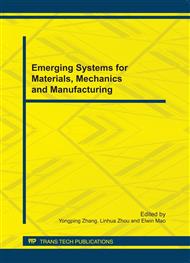p.608
p.612
p.617
p.621
p.626
p.631
p.636
p.641
p.646
A New Efficient Secure Multi-Party Computation
Abstract:
In an existed multi-party computation protocol, any verifier must be a participant. A new secure multi-party computation among t participants and a verifier was proposed, in which the verifier no belong to participants can learn the final output. Our protocol is more practicable in some important situations, for example, in an electronic bidding, where an arbiter is only a verifier but is usually not a participant.
Info:
Periodical:
Pages:
626-630
Citation:
Online since:
October 2011
Authors:
Price:
Сopyright:
© 2012 Trans Tech Publications Ltd. All Rights Reserved
Share:
Citation:


